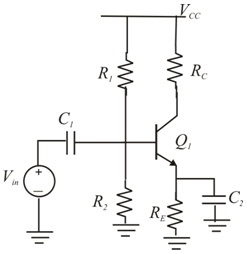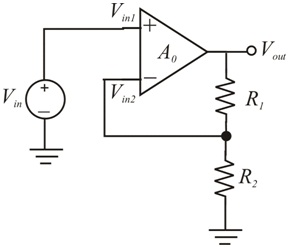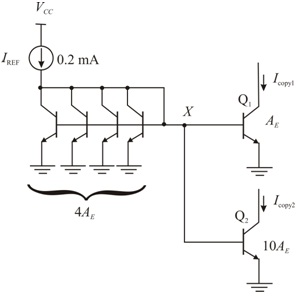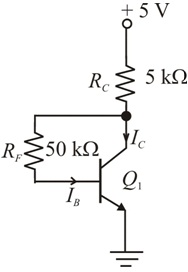Specialization: Micro Electronics
Question 1) Consider the Half-wave rectifier with RC load given below.

Find the value of the dc output voltage, ripple voltage, conduction interval and conduction angle for the circuit having a secondary voltage of 12.6 Vrms(60 Hz) with
R = 15 Ω
C = 25,000 μF
Assume the diode on-voltage Von = 1 V.
Question 2) Design the stage of the circuit given below to satisfy the following conditions:
Ic = 1mA.
Voltage drop across RL = 400 mV.
Voltage gain = 20 in the audio frequency range (20 Hz to 20 kHz).
Input impedance > 2 kΩ.
Assume
β = 100
Is = 5 x 10-16 A
Vcc = 2.5 V

Question 3) Design the non-inverting amplifier shown in the figure below for the following specifications.
Closed-loop gain =5.
Gain error = 1%
Closed-loop band width = 50 MHZ.

Determine the required open-loop gain and bandwidth of the operational amplifier. Assume the operational amplifier has an input bias current of 0.2 μA.
Question 4) Compute the error in Icopy1 and Icopy2 in the below figure, before and after adding a follower.

Where, AE and 10AE denote one unit and 10 unit transistors respectively.
Calculate Icopy1 if one of the four unit transistors is omitted, that is, the reference transistor has an area of 3AE.
Question 5) Find the small-signal gain, input and output resistance of the amplifier in the figure below for the idealized case with Ri = ∞.
Use
βF = 150
VA = 50 V
